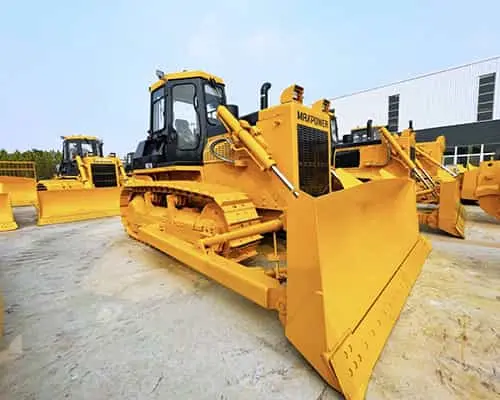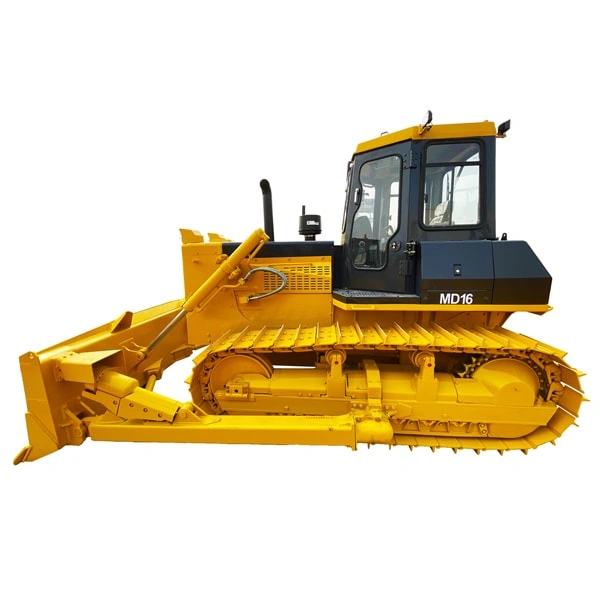Introduction

Welcome to our comprehensive guide to dozer work! In this blog post, we’ll delve into everything you need to know about operating a dozer, from its functions and applications to essential techniques and safety measures. Whether you’re a seasoned professional or a beginner, this guide aims to demystify dozer work and equip you with the knowledge to excel in this field.
Understanding the Basics of Dozer Work
In this comprehensive section, we’ll delve into the fundamental aspects of dozer work, providing a thorough understanding of its intricacies. We’ll start by dissecting the anatomy of a dozer, examining each component’s role in its operation and functionality. From the powerful engine and hydraulic system to the sturdy chassis and versatile blade, we’ll explore how these elements work in harmony to execute various tasks efficiently.
Next, we’ll unravel the primary functions of a dozer, showcasing its ability to push, pull, and level materials with precision and power. Whether it’s clearing land for construction projects, creating access roads in mining operations, or leveling fields in agriculture, the dozer’s versatility knows no bounds.
Essential Techniques for Efficient Dozer Operation
Embark on a journey to master the art of operating a dozer with precision and efficiency. In this enlightening section, we’ll unveil a treasure trove of key techniques and strategies that will elevate your skills to new heights. Starting from the basics, we’ll explore essential maneuvers such as pushing, pulling, and grading, unraveling the intricacies of each motion to ensure mastery. But we won’t stop there – delve deeper into the realm of advanced skills, where slope cutting and contouring await your exploration.
Safety Measures and Best Practices
Safety takes center stage in every aspect of dozer operation. In this crucial section, we’ll delve deep into the critical importance of prioritizing safety protocols and integrating best practices to mitigate potential risks and safeguard personnel from accidents and injuries.
First and foremost, we’ll emphasize the significance of conducting thorough pre-operation inspections. These inspections serve as the frontline defense, allowing operators to identify and address any potential issues or hazards before commencing work. From checking fluid levels and inspecting mechanical components to assessing tire condition and ensuring proper functionality of safety features, every aspect of the dozer must undergo meticulous scrutiny.
Furthermore, we’ll underscore the indispensable role of personal protective equipment (PPE) in safeguarding operators against potential hazards. From hard hats and safety glasses to high-visibility vests and steel-toed boots, wearing appropriate PPE is non-negotiable in ensuring the well-being of personnel on the job site. We’ll provide comprehensive guidance on selecting the right PPE for specific tasks and environments, as well as ensuring proper fit and maintenance to maximize effectiveness.
Common Challenges and Solutions in Dozer Work

Despite its efficiency and versatility, dozer work can present various challenges. In this section, we’ll explore common issues such as uneven terrain, adverse weather conditions, and equipment malfunctions, and provide practical solutions to overcome them. Whether you’re dealing with muddy terrain or steep slopes, we’ll offer troubleshooting tips to help you tackle obstacles effectively.
Advanced Applications and Innovations
Embark on an enlightening journey as we uncover the groundbreaking advancements propelling the world of dozer technology into the future. In this visionary section, we’ll delve into the realm of innovation and explore the revolutionary applications shaping the landscape of dozer work.
Prepare to be amazed as we unveil the transformative capabilities of GPS-guided dozers. Gone are the days of manual navigation – with precision GPS technology at their helm, modern dozers can navigate with unparalleled accuracy and efficiency. We’ll delve into the intricacies of GPS-guided systems, showcasing how they optimize productivity, minimize errors, and enhance overall performance in various industries.
| Feature | Description |
|---|---|
| Precision Navigation | GPS-guided dozers utilize satellite positioning to navigate with pinpoint accuracy, eliminating the need for manual guidance. |
| Increased Efficiency | By autonomously following predetermined paths, GPS-guided systems optimize workflow, reduce idle time, and enhance overall operational efficiency. |
| Error Minimization | Human errors in navigation are significantly reduced, leading to fewer mistakes in grading, excavation, and other tasks, resulting in improved project outcomes. |
| Enhanced Safety | Automated navigation enhances safety by minimizing the risk of accidents caused by human error or fatigue, ensuring a safer working environment for operators and workers. |
Conclusion
As we wrap up our guide to dozer work, we hope you’ve gained valuable insights into this essential aspect of heavy equipment operation. Whether you’re a novice or an experienced operator, mastering the art of dozer work requires dedication, practice, and a commitment to continuous learning. By understanding the basics, honing your skills, prioritizing safety, and embracing innovation, you can excel in the field of dozer work and contribute to the success of your projects.
FAQs
Q: How do I operate a dozer safely?
A: Operating a dozer safely requires proper training, adherence to safety protocols, and vigilance while on the job. Conducting pre-operation inspections, wearing appropriate PPE, and following safe operating procedures are crucial steps to prevent accidents and injuries.
Q: What are some common applications of dozer work?
A: Dozers are used for a wide range of tasks, including earthmoving, land clearing, road construction, mining, agriculture, and forestry. Their versatility makes them indispensable in various industries and applications.
Q: What are some advanced technologies used in modern dozers?
A: Modern dozers are equipped with advanced technologies such as GPS guidance systems, automated grading controls, and telematics for remote monitoring and diagnostics. These innovations improve accuracy, efficiency, and productivity in dozer operations.





-150x150.webp)
